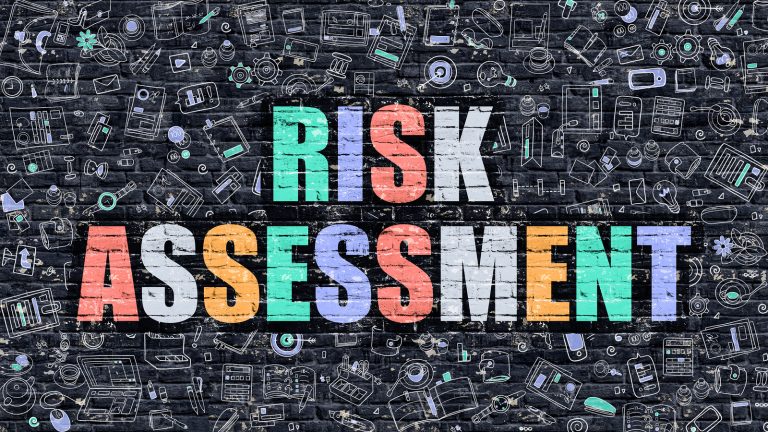In every company’s risk management strategy, it is crucial that cyber-security risk assessment performed right; otherwise, the level of vulnerability to potential threat would be significantly high. When it comes to risk assessment, the needs of different organizations vary because those of a multinational corporation can’t be compared to those of mid-sized organizations.
Every company tries as much as possible to minimize the amount of risk it undertakes. To do that, risk assessment is a necessity that they can’t do away with. The process, however, is more difficult than risk management itself. Regardless, risk assessment does not have to be that complicated and breaking it down to smaller pieces makes it more manageable.
Contents
Step 1: Come up with a risk management team
Despite how good you are at cybersecurity you can’t be everywhere all the time. You will need an able team to back you up and help gain crucial insight into the total risk profile of the organization. Within your company, there are departments, and all of them work differently. Therefore, it is crucial you have a cross-functional team because it not only enables you to communicate risks but also come up with a holistic analysis. Ensure your team has;
- Senior management for proving oversight
- A chief information security officer for reviewing network architecture
- Privacy officer to help with locating personally identifiable information
- Marketing to discuss collected and stored information
- Product management for guaranteeing product security as it undergoes the development cycle
- Human resources for giving insight to some employee information
- Manager for each significant business line to take charge of all the data at that level
Ensure the business objectives are clear and aligned to information security goals and to do that you’ll need a cross-functional team that can yield the desired results.
Step 2: Catalog information asset
We’ve already said how an inter-department risk management team is crucial, but that’s not all. It also helps you to catalog all information assets. Well, some things won’t pass you by like the things that your organization collects, stores, and transfers but other information on all the different Platform-as-a-Service (PaaS), Infrastructure-as-a-Service (IaaS), and Software-as-a-Service (SaaS) used by other departments might.
The same way, other departments may not realize they can put information at risk by using some SaaS vendors. It is worth noting that third-party vendors are the primary source of data breach risk. There are some questions that you need to ask yourself to help you understand better the different types of data collected, stored and transferred by your company. They include;
- What are the types of information collected by departments?
- Where is the storage?
- What is used in the transmission process?
- What is the reason for collecting the information?
- What vendors does each department use?
- What information is accessed by those vendors?
- How is the authentication process for information access?
- What are the devices used by the workforce?
- What networks are utilized in information transmission?
These questions will give a clear understanding of what your organization is dealing with.
Step 3: Risk assessment
In any organization, the importance of information varies; some are more critical than others. The same way, not all vendors are equally secure. After identifying all your information assets, then you should make sure you look at any possible risk posed by vendors.
- Identify the systems, networks, and software crucial to company undertakings.
- Identify the information that should have the management of confidentiality, availability, and integrity.
- In case of data loss what devices are at a higher risk?
- What are the chances of data corruption?
- Determine the systems, networks, and software that might be targeted for a data breach by a cybercriminal.
- What is the potential financial and reputation risk in case of a data breach?
The risk assessment process is not an easy task. However, it makes it a little bit easier by taking your information asset catalog then identifying areas that might be easily accessible by cybercriminals. It is, therefore, crucial that you go through every piece of information, vendor, software, network, system and device to understand the level of risk it poses.
Step 4: Risk analysis
When doing an assessment, risk analysis takes the process an extra step. The same way information is not equally secured; risks are not equal either. So, you need to keep in mind:
- The probability of cybercriminals getting access to the information
- Financial, operational, and reputational impact on your organization by the data event.
Once you multiply the probability by impact, then you can determine your risk tolerance level. This way, you can know when to accept, transfer, mitigate, or refuse a risk.
Step 5: Come up with security controls
Once you’ve figured out the amount of risk you can take, then you should set some security controls. Some of them include;
- Network segregation
- At-rest and in-transit encryption
- Workforce training
- Password protocols
- Vendor risk management program
- Firewall configuration
- Anti-malware and anti-ransomware software
- Multifactor authentication
The above list consists of just a few controls, but it should give you an idea of how to set them. The most important thing is ensuring everything aligns with your information security stance. Whether it’s your vendor risk management program or third-party business associates, everything should be well-aligned to avoid any data breach.
Step 6: Monitor and review the effectiveness
Over the years, IT security has been a very hot topic. There will always be someone trying new methodologies to compromise security controls it is, therefore, the responsibility of organizations to maintain a risk management program to effectively monitor their IT environments for any new threats that may arise. Ensure that your risk analysis is flexible to adjust to any new threats. The most important thing for your organization is building an unbreakable cyber-security profile that can cope with any risks that come up along the way.
Author Bio
 |
Ken Lynch is an enterprise software startup veteran, who has always been fascinated about what drives workers to work and how to make work more engaging. Ken founded Reciprocity to pursue just that. He has propelled Reciprocity’s success with this mission-based goal of engaging employees with the governance, risk, and compliance goals of their company in order to create more socially minded corporate citizens. Ken earned his BS in Computer Science and Electrical Engineering from MIT. Learn more at ReciprocityLabs.com. |

